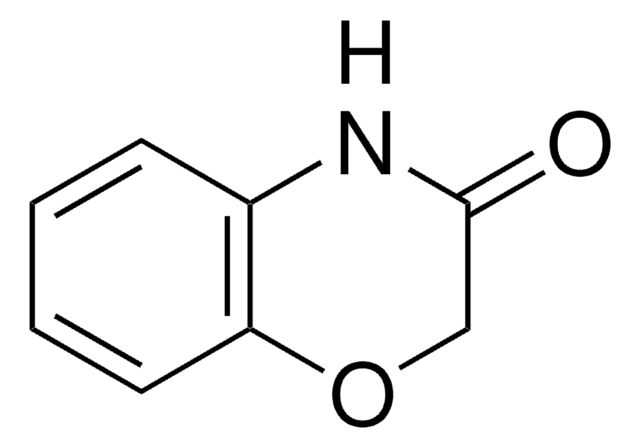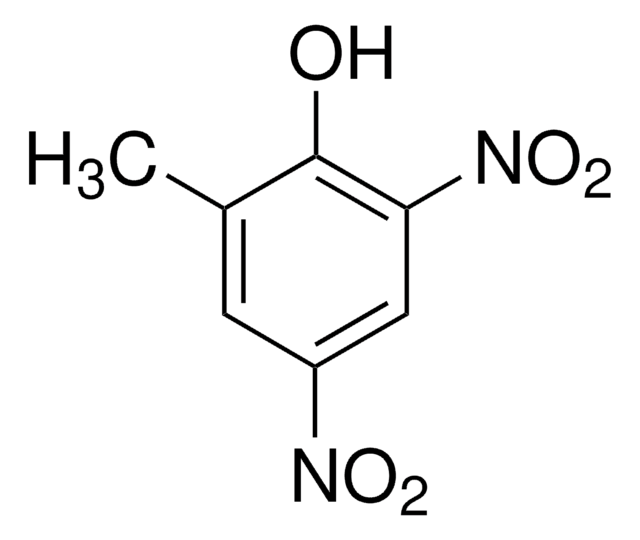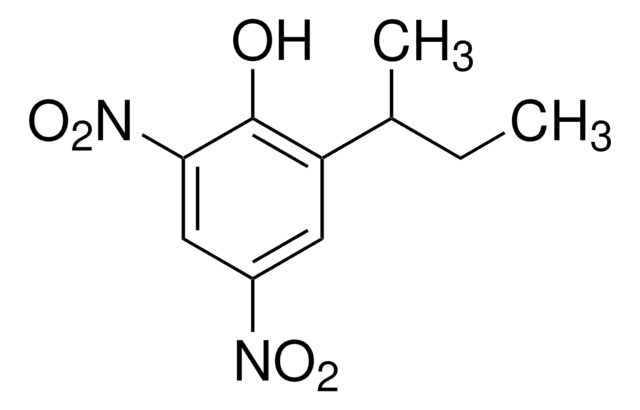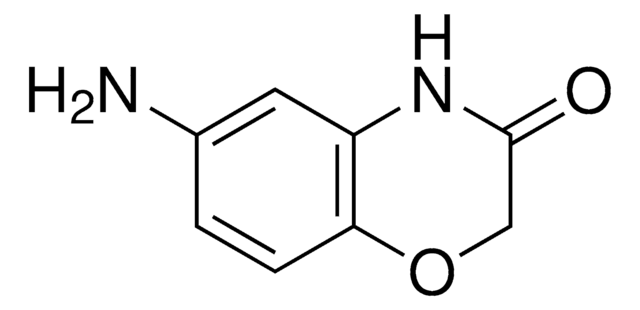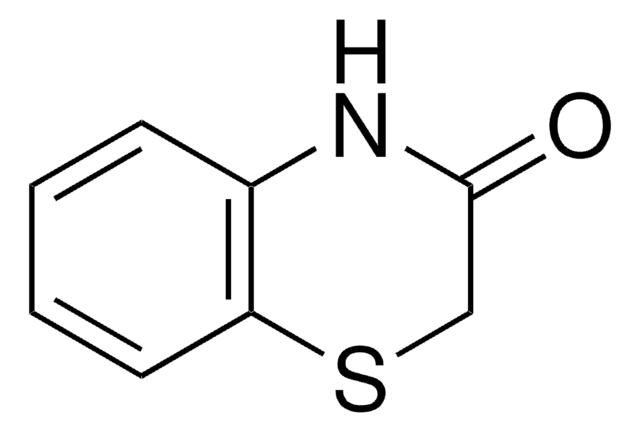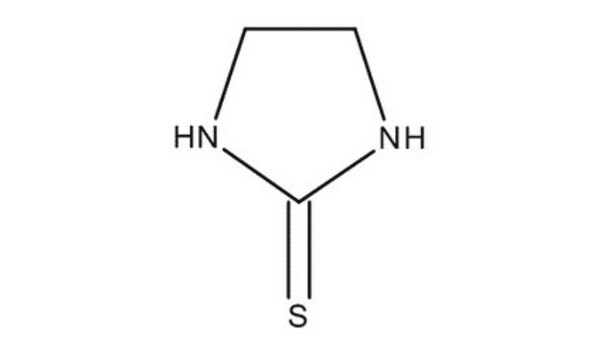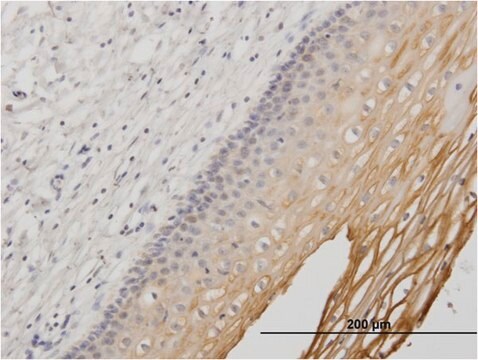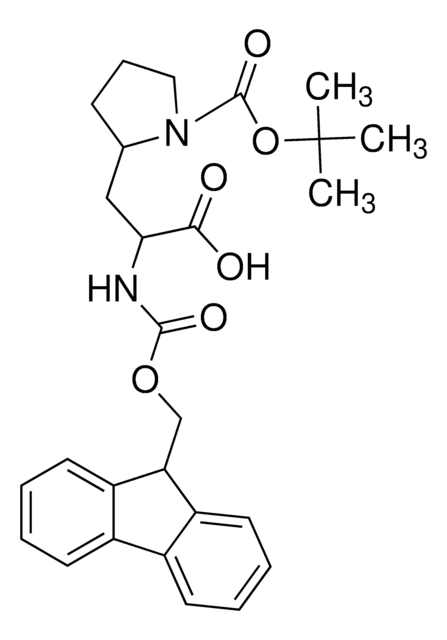Wichtige Dokumente
CRM69083
Dinoseb
certified reference material, TraceCERT®, Manufactured by: Sigma-Aldrich Production GmbH, Switzerland
Synonym(e):
2-sec-Butyl-4,6-dinitrophenol
About This Item
Empfohlene Produkte
Qualität
certified reference material
TraceCERT®
Qualitätsniveau
Produktlinie
TraceCERT®
Haltbarkeit
limited shelf life, expiry date on the label
Hersteller/Markenname
Manufactured by: Sigma-Aldrich Production GmbH, Switzerland
Format
neat
Lagertemp.
2-8°C
SMILES String
CCC(C)c1cc(cc(c1O)[N+]([O-])=O)[N+]([O-])=O
InChI
1S/C10H12N2O5/c1-3-6(2)8-4-7(11(14)15)5-9(10(8)13)12(16)17/h4-6,13H,3H2,1-2H3
InChIKey
OWZPCEFYPSAJFR-UHFFFAOYSA-N
Suchen Sie nach ähnlichen Produkten? Aufrufen Leitfaden zum Produktvergleich
Verwandte Kategorien
Allgemeine Beschreibung
Certified content by quantitative NMR incl. uncertainty and expiry date are given on the certificate.
Download your certificate at: http://www.sigma-aldrich.com
Dinoseb is a selective nitrophenolic herbicide used for protection against postemergence of grass and broad-leaf weeds in vegetables, fruits, nuts, and other field crops such as soybeans. In addition, it also finds its use as an insecticide for grapes, and as a seed drying agent. It acts by uncoupling oxidative phosphorylation in mitochondria and inhibiting ATP synthesis.
Under the Regulation (EC) No 1107/2009 and withdrawing the Council Directives 79/117/EEC and 91/414/EEC, dinoseb is not approved for its use as a plant protection product in the European Union (EU). It was also banned for use as a pesticide in the US in 1986 by the US EPA (Environmental Protection Agency). But a default maximum residue limit (MRL) in the range of 0.02 mg/kg to 0.1 mg/kg is set for the presence of dinoseb (measured as a sum of dinoseb, its salts, dinoseb-acetate, and binapacryl) in products of plant and animal origin.
Anwendung
The dinoseb CRM may also be used to:
- Simultaneously determine dinoseb and pendimethalin in surface water samples using optimized direct injection (DI) and solid phase extraction (SPE) coupled to ultra high-performance liquid chromatography-tandem mass spectrometry (UPLC-MS/MS)
- Evaluate anodic voltametric analysis of dinoseb in river water samples using a boron doped diamond electrode following cathode pre-treatment and in the presence of cationic surfactants
- Extract 15 phenols from refinery wastewater samples by dispersive liquid-liquid microextraction (DLLME) technique and identify them by liquid chromatography-photodiode array detector (LC-PDA)
- Detect chlorophenoxy acid methyl esters and other chlorinated herbicides in peppermint tea, plum, and orange peel extract soft ionization gas chromatography coupled to quadrupole time-of-flight mass spectrometry (GC-QTOFMS)
- Analyze 32 pesticide residues of four different chemical classes in tea brew and tea leaves samples by a sample treatment method based on metabolomics and liquid chromatography-mass spectrometry (LC-MS)
- Determine pendimethalin, dinoseb and sodium 5-nitroguaiacolate in vegetable samples by differential pulse voltammetry (DPV) and chemometrics
Empfohlene Produkte
Rechtliche Hinweise
Signalwort
Danger
Gefahreneinstufungen
Acute Tox. 2 Oral - Acute Tox. 3 Dermal - Aquatic Acute 1 - Aquatic Chronic 1 - Eye Dam. 1 - Repr. 1B - Skin Irrit. 2 - Skin Sens. 1
Zusätzliche Gefahrenhinweise
Lagerklassenschlüssel
6.1A - Combustible acute toxic Cat. 1 and 2 / very toxic hazardous materials
WGK
WGK 3
Flammpunkt (°F)
306.9 °F - closed cup
Flammpunkt (°C)
152.7 °C - closed cup
Zulassungslistungen
Zulassungslistungen werden hauptsächlich für chemische Produkte erstellt. Für nicht-chemische Produkte können hier nur begrenzte Angaben gemacht werden. Kein Eintrag bedeutet, dass keine der Komponenten gelistet ist. Es liegt in der Verantwortung des Benutzers, die sichere und legale Verwendung des Produkts zu gewährleisten.
EU REACH SVHC Candidate List
EU REACH Annex XVII (Restriction List)
Hier finden Sie alle aktuellen Versionen:
Analysenzertifikate (COA)
It looks like we've run into a problem, but you can still download Certificates of Analysis from our Dokumente section.
Wenn Sie Hilfe benötigen, wenden Sie sich bitte an Kundensupport
Besitzen Sie dieses Produkt bereits?
In der Dokumentenbibliothek finden Sie die Dokumentation zu den Produkten, die Sie kürzlich erworben haben.
Unser Team von Wissenschaftlern verfügt über Erfahrung in allen Forschungsbereichen einschließlich Life Science, Materialwissenschaften, chemischer Synthese, Chromatographie, Analytik und vielen mehr..
Setzen Sie sich mit dem technischen Dienst in Verbindung.